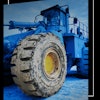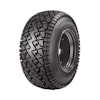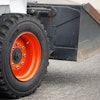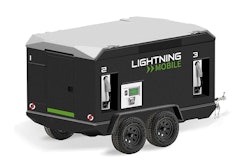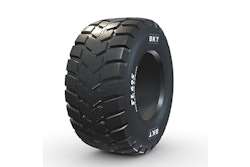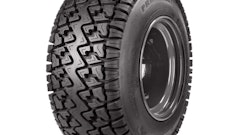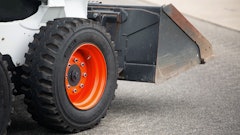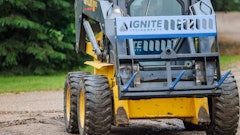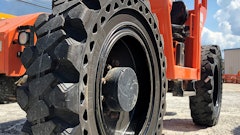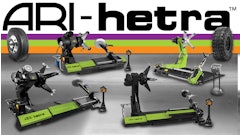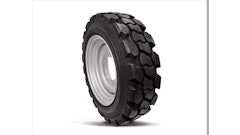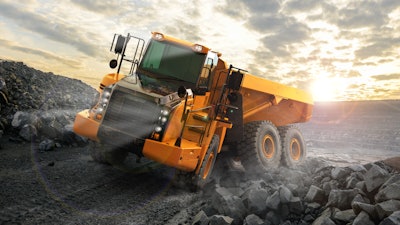
With autonomous and electric vehicles continuing to become more commonplace, their designs are impacting many components and systems, including the tires. Research firm Smithers released a report earlier in 2020 examining the impact of autonomous vehicles on tires. It found tire materials and components, tire retail and tire marketing will be most affected.
Smithers’ report went on to note tires for autonomous vehicles will:
- place a greater emphasis on durability over handling and other performance criteria
- accelerate the adoption of smart tires with sensing and reporting functions
- see more use of low-maintenance or planned tire monitoring platforms to manage fleets of shared autonomous vehicles
- demand lower weight tires to extend mobility, especially for electric vehicles
“Electric and autonomous vehicles are becoming more popular due to operating efficiencies,” says Ron Tatlock, manager – training & engineering at BKT USA, Inc. “Designing tires for optimum tire and vehicle performance on electric and autonomous vehicles will help owners maximize the efficiencies and control the cost of operation.”
Lower Rolling Resistance Required
Aaron Dahl, chief engineer Americas at GKN Wheels, says it is important to note that design challenges raised by electric vehicles and those by autonomous vehicles are different and therefore require different solutions. Autonomous vehicles in general require wheels and tires that provide increased durability, strength and longevity, whereas the challenge with electric vehicles comes in the application of torque and the different demands this imposes on wheels and tires.
Julian Alexander, product line manager material handling at Continental, notes the different requirements of both vehicle types places greater demands on tire manufacturers. Forklifts, for instance, are already electric and are quickly becoming more automated. Tires for these vehicles must be robust, heat resistant and durable, especially if automated since they are able to run 24/7, creating a lot of wear.
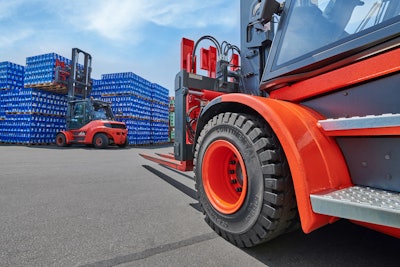 Tires for forklifts which are both autonomous and electric will need to meet contradictory requirements of high durability and low rolling resistance.Continental
Tires for forklifts which are both autonomous and electric will need to meet contradictory requirements of high durability and low rolling resistance.Continental
Lower rolling resistance is an important feature for electric vehicles to help preserve the stored electrical energy on a vehicle, says Tatlock. Decreased rolling effort of the tires leads to a reduction in the amount of energy needed to move the vehicle. Minimizing the amount of energy used by the tires helps to ensure the vehicle can operate as long as possible before recharging is necessary.
Tackling Tire Slippage
Design considerations to minimize tread wear from tire-to- surface slippage when the vehicle begins to move is also integral for electric vehicles, says Tatlock. This is because electric drivetrains are capable of nearly instantaneous torque at the full motor power, eliminating motor ramp up or drivetrain slippage. The full torque of the drive motors is thus instantly applied to the tires, which can increase the amount of wear they will experience over their lifetime.
“Also, tire casings must be robust enough to handle this unthrottled torque,” Tatlock adds.
Tire slippage between tire and rim as well as tire and ground surface must be taken into consideration due to the increased amount of torque being placed on the tires of electric vehicles, says Gianpietro Bramè, global and European chief engineer wheels at GKN Wheels. This is already a common problem in the agriculture industry due to the increasing size and horsepower rates of equipment. As such, GKN Wheels developed its Profi-Grip wheel rim, which has demonstrated the ability to eliminate tire slippage.
 Tire slippage iwill likely be a challenge with electric vehicles due to increased torque being put directly to the tires.GKN Wheels
Tire slippage iwill likely be a challenge with electric vehicles due to increased torque being put directly to the tires.GKN Wheels
Dahl believes tire slippage will likely be an issue for electric vehicles in the construction industry, as well. Both Dahl and Bramè say wider tire bead designs may be one of the methods used to overcome this. But this will impact rim design, making it critical for tire, wheel and equipment manufacturers to work together to achieve the right design for an application.
Dahl notes wider tires and larger diameter wheels to help spread the torque could also be a solution to overcoming tire slippage. Increased torque application associated with electric vehicles may lead to challenges with bolted joints and disc designs, as well, which he again notes GKN Wheels has the knowledge and experience to help OEMs overcome.
“It is possibly too early to know with certainty what all the challenges are which lie ahead in these sectors, but we are prepared and equipped to meet them," Dahl says, "and our R&D team will work with OEMs, tire manufacturers and operators to develop and test appropriate and effective long-term solutions."
Durability and Longevity Key for Autonomy
Autonomous vehicles will require robust compounding and designs with extra overall protection for tire sidewalls and tread.
“The autonomous vehicle may not drive around a rock or other tire hazard or avoid hitting the [side of a] wall as consistently as a good operator,” Tatlock points out, "necessitating a more durably designed tire. And because autonomous vehicles are running continuously, a special design may be required to lower heat generation and retention to avoid heat-related damage. "
Reliability and assurance of long-life performance are critical requirements in the design of wheels and tires for autonomous goods vehicles (AGV), says Bramè. “Standard wheels are simply unable to cope with this extraordinary operating environment and so our experienced R&D team worked closely with OEMs, tire manufacturers and port authorities to develop a solution to meet their needs, developing a wheel better able to cope with the increased stresses and so have significantly more resilience to fatigue,” he says.
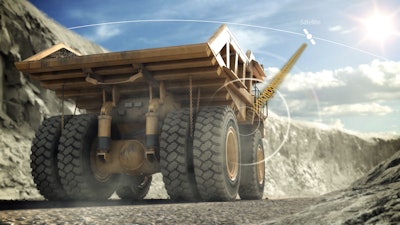 Integration of sensors and monitoring tools will become more commonplace to help prevent unplanned downtime or accidents on the jobsite.Continental
Integration of sensors and monitoring tools will become more commonplace to help prevent unplanned downtime or accidents on the jobsite.Continental
“Whereas traditional wheels would have a lifespan of some 37,000 hours in these challenging applications, AGV Infini-Forge wheels with customized geometry have demonstrated in field tests a lifespan in excess of 90,000 hours and so are considered to be a structural component of the machine,” says Bramè.
In some market sectors, like construction or agriculture, the use of autonomous vehicles is more complicated due to the varied and less predictable environment in which the machine is working, says Bramè. Duty cycles are not necessarily as repetitive as those of other applications, such as port or surface mine operations, and he says it is unlikely users will require 24/7 operation. As such, the challenges for autonomous vehicle tires and wheels may be different.
“Although we have a good understanding of what the issues are likely to be in [the off-road equipment] sectors, to fully understand each market’s requirements, we will continue to work closely with OEMs, tire manufacturers and end users to make sure we develop solutions that are right for each of them and put the solution through its paces in field tests,” says Bramè.
Smarter Tires Will Be Required
Reinhard Klant, product line manager earthmoving at Continental, says autonomous equipment in the earthmoving sector is often operated in a convoy to increase efficiency and enable smooth processes. However, if one of the vehicles breaks down due to an issue with a tire or other system, it will not only stop the entire fleet but also increase the risk of a collision. As such, it will become increasingly important to use monitoring tools such as sensors that can send alerts to other vehicles as a problem occurs and prevent such incidents from occurring.
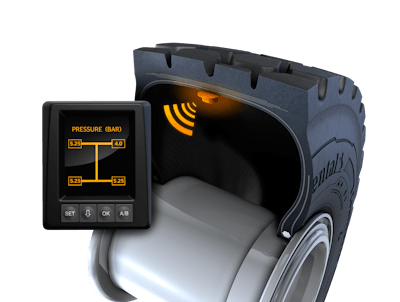 ContiPressureCheck features a sensor embedded in the tire to monitor tire performance and issues alerts on an in-cab display.Continental
ContiPressureCheck features a sensor embedded in the tire to monitor tire performance and issues alerts on an in-cab display.Continental
In future, the design of and technologies used in machinery will be even more tailored to their working environment, according to Continental. Demands for a more sustainable world will also continue to increase. Because of this, tires of the future will need to be intelligent, sustainable and environmentally friendly, meaning they must be as efficient as possible in order to save fuel and emissions. At the same time, they will have to be made of recyclable and biodegradable materials.
In general, manufacturers agree that traditional tire and wheel designs will not be able to meet the requirements demanded by autonomous and electric vehicles, so new solutions will be needed. Rather than being completely new designs, however, these tires and wheels are likely to be evolutions of existing technologies - both product and process - building on proven solutions to respond to the needs of these new machines, agree both Bramè and Dahl.
“BKT expects to see more of these vehicles appearing in more diverse applications as the technology and ingenuity of equipment designers continues to grow. We are ready for the challenge,” says Tatlock.

